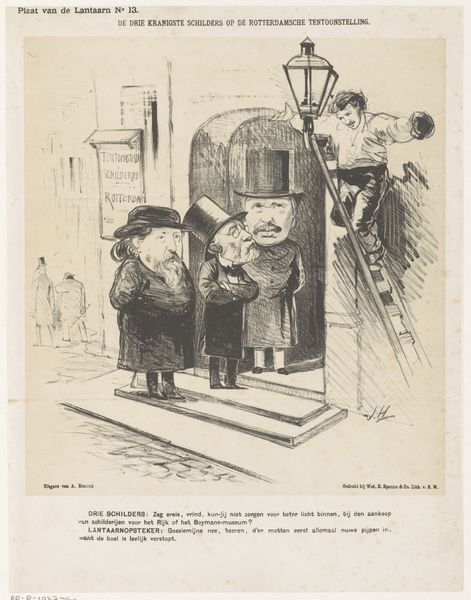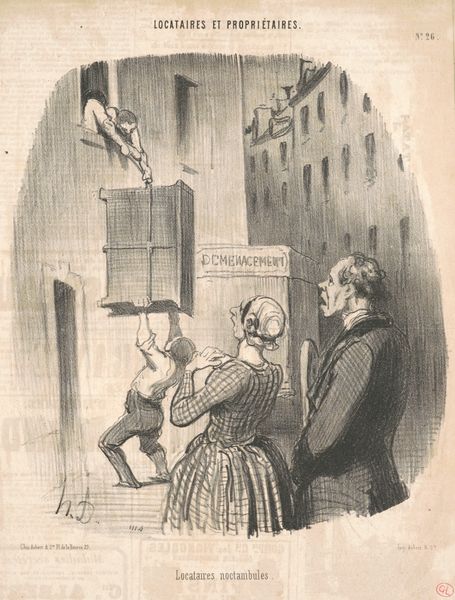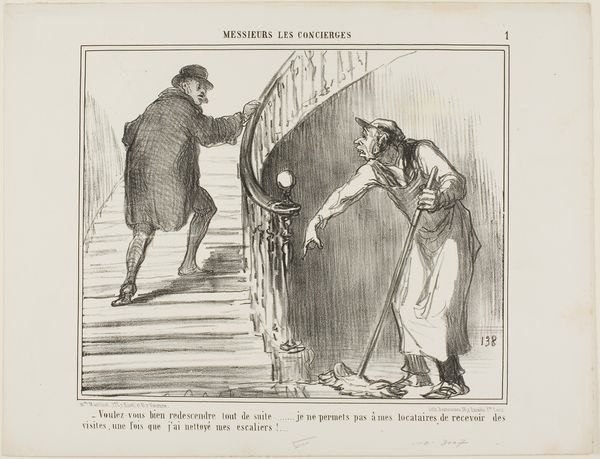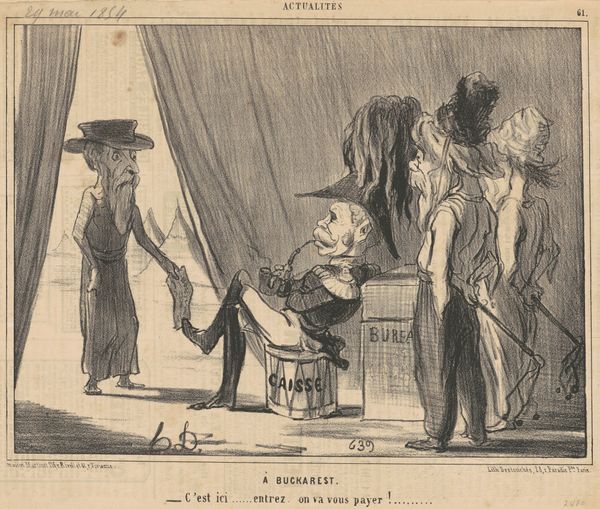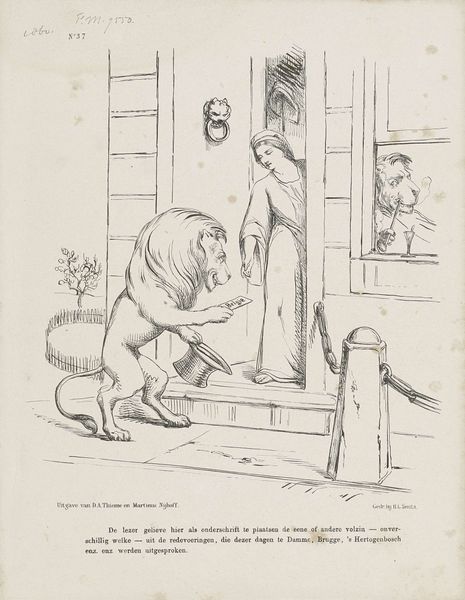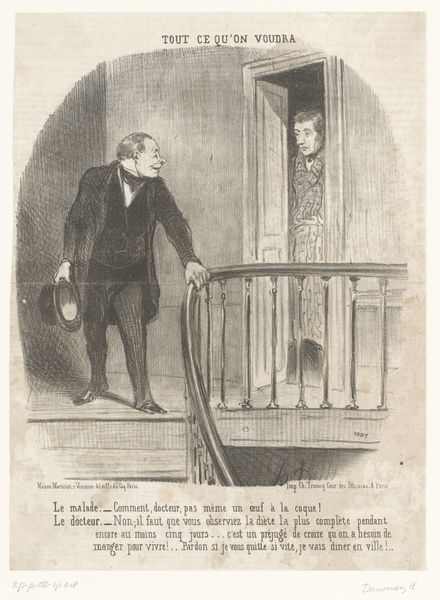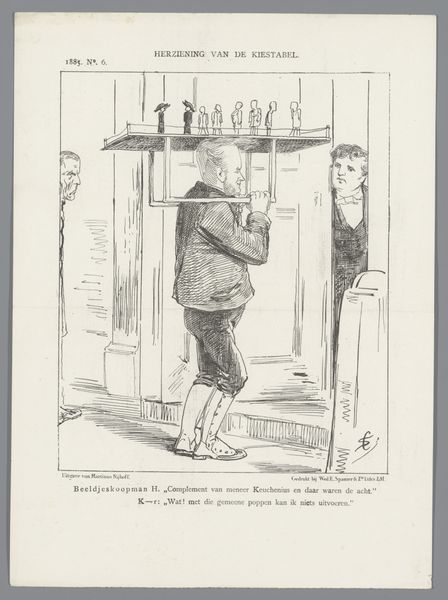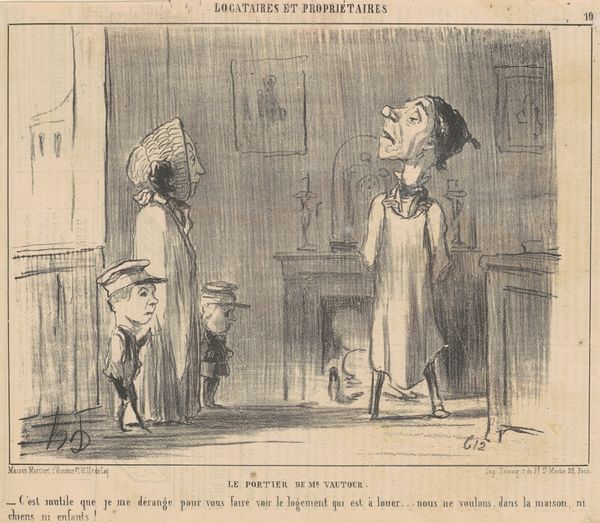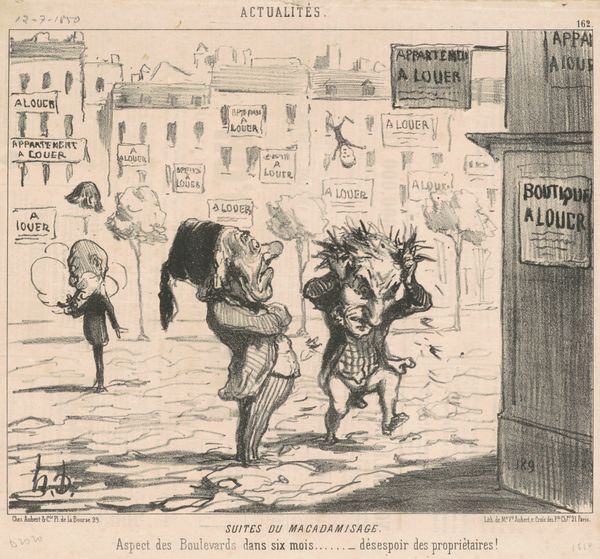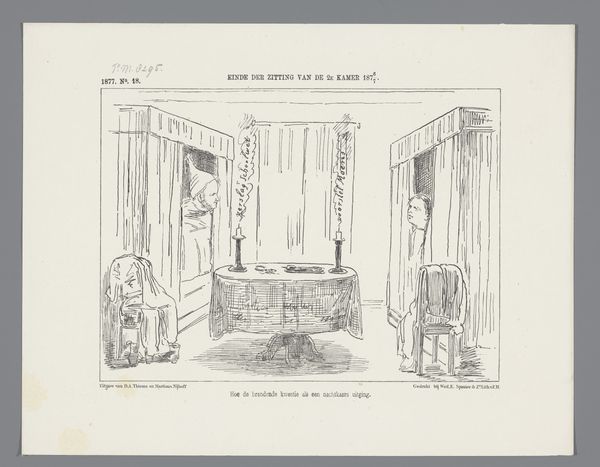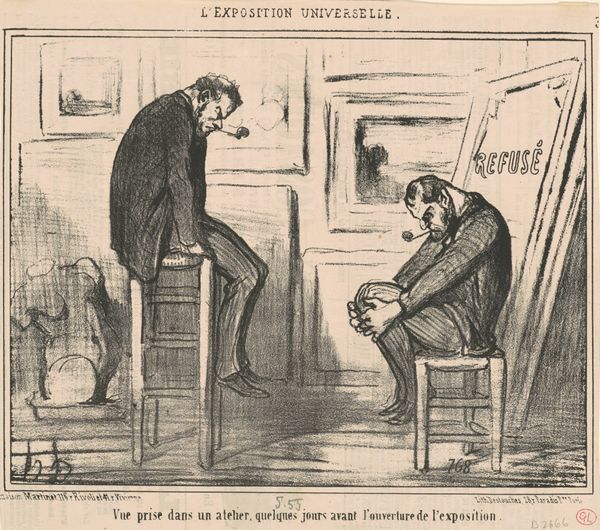
drawing, print, ink, pen, poster
#
drawing
#
narrative-art
# print
#
figuration
#
ink
#
symbolism
#
pen
#
cityscape
#
poster
#
grotesque
#
modernism
#
erotic-art
Copyright: Public domain
Curator: Thèophile-Alexandre Steinlen's "Monsieur L'Bon" from 1889, rendered with pen and ink, presents a rather stark image. The artwork combines figuration, a cityscape backdrop, and what some might term a grotesque element, all under the stylistic umbrella of symbolism and modernism. Editor: Woah, grotesque is one way to put it. My initial gut reaction? This is disturbing, intense. It feels like peering into a nightmare unfolding on a Parisian street—the sharp, scratchy lines add to that feeling of unease, like looking through cracked glass. Curator: Precisely. Observe how Steinlen utilizes the medium itself to underscore the artwork's themes. The stark black and white contrast amplifies the severity of the scene. The guillotine, centrally positioned, bisects the composition, mirroring the very act it performs. Editor: It's brutally effective. But there's more here than just horror, right? The artist seems to be saying something about power, or maybe its abuse. That aloof figure standing beside the device...is that supposed to be Monsieur L'Bon? Is he complicit, apathetic, or what? And the shadows...it's like the whole city is bearing witness. Curator: Indeed. The presence of text gives clues—a poster advertising "Paroles et Musique de Aristide Bruant". The lyrics, the music, are juxtaposed with an ultimate and absolute silence. Editor: Talk about dissonance! You know, there's a theatrical quality here, too. A stage, an audience… this feels like a dark cabaret, something deliciously twisted that plays out on the edges of proper society. What's it say about that audience though? Curator: A fair question. The artwork leaves much open to interpretation. We might read this through lenses of social commentary, fin-de-siècle anxieties, or even explore the erotic undercurrent some perceive. But formalistically, it's an astute visual construction. Editor: I'm walking away still feeling a bit off-kilter, but in a good way, you know? It's a print that really sticks with you, messes with your head a little. It makes you think, and more than that it makes you *feel*... which is the mark of pretty potent art, wouldn’t you say? Curator: Indeed, it leaves an undeniable mark, which suggests the power of this artistic form, regardless of whether its message gives us pleasure or causes discomfort.
Comments
No comments
Be the first to comment and join the conversation on the ultimate creative platform.
